
The Fantasque was a Lion-class 64-gun ship of the line of the French Navy. She is famous for being captained by the French commander Pierre-André de Suffren during the American Revolutionary War.
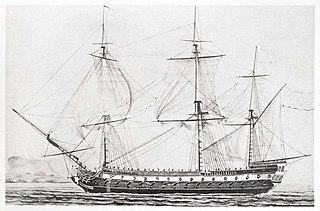
Triomphant was an 80-gun ship of the line of the French Navy.
Solitaire was a 64-gun ship of the line of the French Navy, built by Antoine Groignard and launched in 1774, lead ship of her class. She was captured by the Royal Navy on 6 December 1782, and commissioned as the third rate HMS Solitaire. She was sold out of the Navy in 1790.

Surveillante was an Iphigénie-class 32-gun frigate of the French Navy. She took part in the Naval operations in the American Revolutionary War, where she became famous for her battle with HMS Quebec; in 1783, she brought the news that the war was over to America. She later took part in the French Revolutionary Wars, and was eventually scuttled during the Expédition d'Irlande after sustaining severe damage in a storm. The wreck was found in 1979 and is now a memorial.

Neptune was a 74-gun ship of the line of the French Navy.

The Conquérant was originally designed and built by François Coulomb the Younger at Toulon from 1745 to 1747, as a modified version of the same constructor's Terrible built at the same dockyard in 1736-40. In need of major repairs by early 1755, she was not employed throughout the Seven Years' War, after which she was formally taken out of service on 17 March 1764 and was rebuilt by Joseph-Louis Ollivier at Brest from January to December 1765 as a Citoyen-class 74-gun ship of the line of the French Navy.

Dauphin Royal was a 74-gun ship of the line of the Royal French Royal Navy, designed in 1735 by Blaise Ollivier and constructed in 1735 to 1740 at Brest Dockyard.
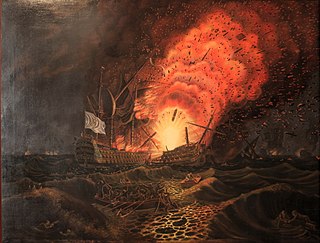
César was a 74-gun ship of the French Navy. Ordered in the spring of 1767 from the Toulon shipyard, she was launched on 3 August 1768. César saw service in the American War of Independence, during which she was destroyed in the Battle of the Saintes.
The Citoyen was a 74-gun ship of the line of the French Navy, lead ship of her class to a design by Joseph-Louis Ollivier. She was funded by a don des vaisseaux donation from the Bankers and General Treasurers of the Army.
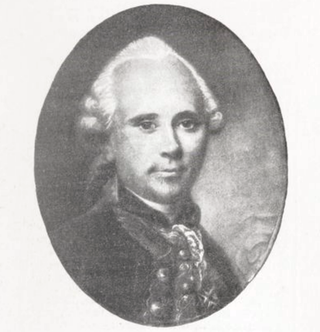
François Hector d’Albert, comte de Rioms or Rions was a French Navy officer. He served in the War of American Independence, earning a membership in the Society of Cincinnati.
Sagittaire was a 50-gun ship of the line of the French Navy.

Experiment was a 50-gun ship of the line of the British Royal Navy. Captured by Sagittaire during the War of American Independence, she was recommissioned in the French Navy, where she served into the 1800s.

Éveillé was an Artésien-class 64-gun ship of the line of the French Navy, launched in 1772.
Louis Augustin de Monteclerc was a French Navy officer. He served in the War of American Independence.
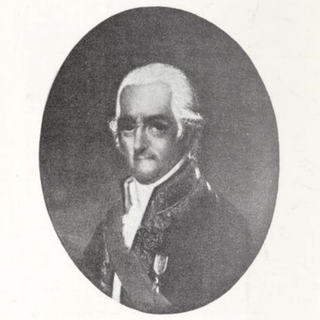
Charles-Marie de La Grandière was a French Navy officer. He served in the War of American Independence.
François-Aymar de Monteil was a French Navy officer. He served in the War of American Independence, earning membership in the Society of the Cincinnati. He was also a member and director of the Académie de Marine.
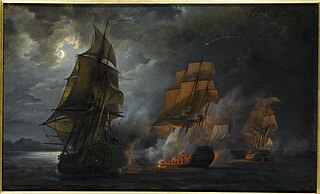
Triton was a 64-gun ship of the line of the French Navy designed by François Coulomb the Younger. She took part in the Seven Years' War and in the War of American Independence.
Zodiaque was a 74-gun Diadème-class ship of the line of the French Navy.

Armand-Claude Poute de Nieuil was a French Navy officer. He served during the War of American Independence.

Vaillant was a 64-gun ship of the line of the French Navy, designed by Noël Pomet, and lead ship of her class.














